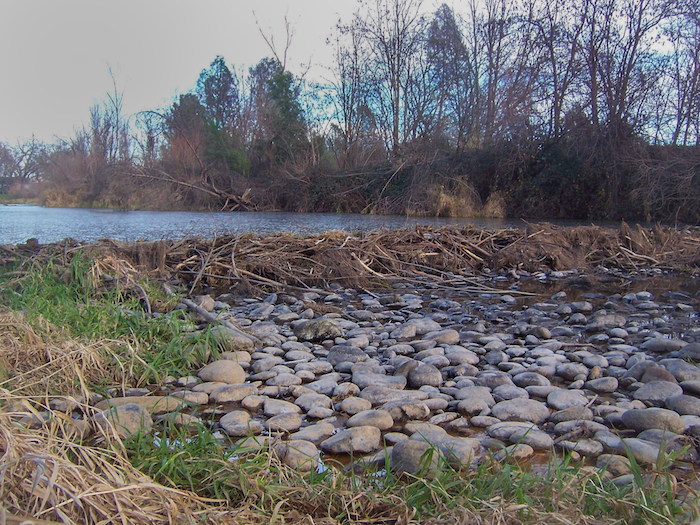
Article by Jeannette Carroll
Last October found the Sacramento River dropping lower and lower. The slough along Redding’s Cascade Park dropped to ankle-deep water. The ducks were gone. But wait, despite low Keswick Dam releases, residents along the slough noticed the water level begin to rise.
Puzzled, they followed the slough down to Cascade Park and discovered an amazing beaver dam more than 50 feet in length and 3 feet high, constructed of tree limbs and branches, twigs, grass and mud. Its height gradually increased to 4 or 5 feet. The dam survived December’s downpours and, even after our dry January, continues to hold water in a pond that extends over a quarter mile. The pond is well appreciated. Birds, like all creatures, need the right habitat. The Cascade beaver pond is creating a winter home for mallards, wigeons and other dabbling ducks. The dabblers are those who tilt bottoms-up to browse for pondweed, snails and underwater insects.
Along the pool’s edge, an egret patrols in its sharp-eyed hunt for fish, frogs,or just about any animal it can gulp down its long white neck. A steel-blue kingfisher rattles over the pond, taking advantage of the still water to spot its prey. Even a Barrow’s goldeneye, a diving duck typically found in the deeper river, has found a place to rest in the quiet pond.
Of course, any engineering project has costs, too. Without the dam, the slough would now be a riddle of exposed rocks. Shorebirds such as killdeer and yellowlegs, and also jays and sparrows, might pick for food in the trickles through those rocks. As it is, they will be confined to the drier habitat below the dam.
For people, beaver dams can be positive or negative, too. Fortunately, the Cascade pond is only wetting the slough, not posing a threat to area homes.
In the Midwest beavers are being reintroduced in some areas to hold water, a sort of substitute snowpack in the face of dry summers.
Beavers are native in Shasta County and throughout most of North America. Like the dipper, a bird of our mountain streams, they have an extra set of transparent eyelids that enables sight under water.
Beaver families form colonies and may have as many as eight members. Reaching maturity in three or four years, they breed in January or February, and usually have three or four kits. Because they are mainly nocturnal mammals, beavers are not often seen. Residents near Cascade Park have found a second dam on Olney Creek, but checking early and late, have not seen these great engineers at work. Still, they are out there, shaping habitat that some birds and people can enjoy.

Comments are closed.